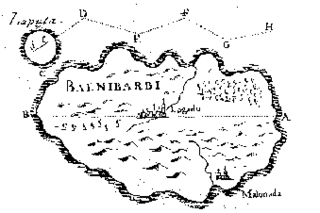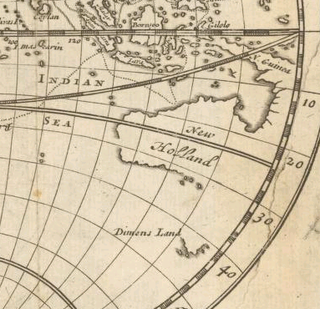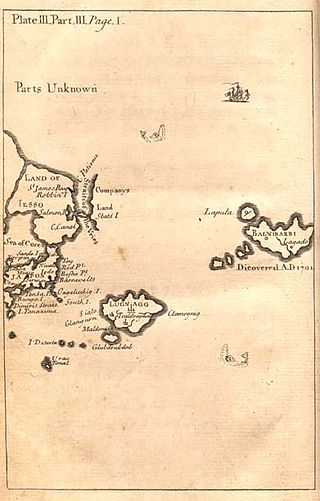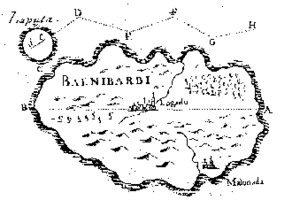
Jonathan Swift was an Anglo-Irish satirist, author, essayist, political pamphleteer, poet, and Anglican cleric who became Dean of St Patrick's Cathedral, Dublin, hence his common sobriquet, "Dean Swift".

Gulliver's Travels, or Travels into Several Remote Nations of the World. In Four Parts. By Lemuel Gulliver, First a Surgeon, and then a Captain of Several Ships is a 1726 prose satire by the Anglo-Irish writer and clergyman Jonathan Swift, satirising both human nature and the "travellers' tales" literary subgenre. It is Swift's best-known full-length work and a classic of English literature. Swift claimed that he wrote Gulliver's Travels "to vex the world rather than divert it".

Houyhnhnms are a fictional race of intelligent horses described in the last part of Jonathan Swift's satirical 1726 novel Gulliver's Travels. The name is pronounced either or. Swift apparently intended all words of the Houyhnhnm language to echo the neighing of horses.

Laputa is a flying island described in the 1726 book Gulliver's Travels by Jonathan Swift. It is about 4+1⁄2 miles in diameter, with an adamantine base, which its inhabitants can manoeuvre in any direction using magnetic levitation. The island is the home of the king of Balnibarbi and his court, and is used by the king to enforce his rule over the lands below.
Adamant in classical mythology is an archaic form of diamond. In fact, the English word diamond is ultimately derived from adamas, via Late Latin diamas and Old French diamant. In ancient Greek ἀδάμας, genitive ἀδάμαντος, literally 'unconquerable, untameable'. In those days, the qualities of hard metal were attributed to it, and adamant became as a result an independent concept.

Castle in the Sky, also known as Laputa: Castle in the Sky, is a 1986 Japanese animated fantasy adventure film written and directed by Hayao Miyazaki. It was produced by Isao Takahata, animated by Studio Ghibli, and distributed by the Toei Company. In voice acting roles, the original Japanese version stars Mayumi Tanaka, Keiko Yokozawa, Kotoe Hatsui, and Minori Terada. The film follows orphans Sheeta and Pazu, who are pursued by government agent Muska, the army, and a group of pirates. They seek Sheeta's crystal necklace, the key to accessing Laputa, a legendary flying castle hosting advanced technology.

Lilliput and Blefuscu are two fictional island nations that appear in the first part of the 1726 novel Gulliver's Travels by Jonathan Swift. The two islands are neighbours in the South Indian Ocean, separated by a channel 800 yards (730 m) wide. Both are inhabited by tiny people who are about one-twelfth the height of ordinary human beings. Both are empires, i.e. realms ruled by an emperor. The capital of Lilliput is Mildendo. In some pictures, the islands are arranged like an egg, as a reference to their egg-dominated histories and cultures.

Brobdingnag is a fictional land, which is occupied by giants, in Jonathan Swift's 1726 satirical novel Gulliver's Travels. The story's main character, Lemuel Gulliver, visits the land after the ship on which he is travelling is blown off course. As a result, he becomes separated from a party exploring the unknown land. In the second preface to the book, in 1727, Gulliver laments that the publisher misspelled the land's name, which Gulliver asserts is actually called Brobdingrag.

Glubbdubdrib was an island of sorcerers and magicians, one of the imaginary countries visited by Lemuel Gulliver in the 1726 satirical novel Gulliver's Travels by Anglo-Irish author Jonathan Swift. The episode on Glubbdubdrib "explores the theme of humanity's progressive degeneration."

A fumi-e was a likeness of Jesus or Mary onto which the religious authorities of the Tokugawa shogunate of Japan required suspected Christians (Kirishitan) to step, in order to demonstrate that they were not members of the outlawed religion; otherwise they would be tortured or killed.

The two moons of Mars are Phobos and Deimos. They are irregular in shape. Both were discovered by American astronomer Asaph Hall in August 1877 and are named after the Greek mythological twin characters Phobos and Deimos who accompanied their father Ares into battle. Ares, the god of war, was known to the Romans as Mars.

Gulliver's Travels is an American-British TV miniseries based on Jonathan Swift's 1726 satirical novel of the same name, produced by Jim Henson Productions and Hallmark Entertainment. This miniseries is notable for being one of the very few adaptations of Swift's novel to feature all four voyages. The miniseries aired in the United Kingdom on Channel 4, and in the United States on NBC in February 1996. The miniseries stars Ted Danson, Mary Steenburgen, Tom Sturridge, James Fox, Omar Sharif, Peter O'Toole, Alfre Woodard, Kristin Scott Thomas, and John Gielgud.

In science fiction, floating cities and islands are a common trope, which range from cities and islands that float on water to ones that float in the atmosphere of a planet by purported scientific technologies or by magical means. While very large floating structures have been constructed or proposed in real life, aerial cities and islands remain in the realm of fiction.

Lagado is a fictional city from the 1726 satirical novel Gulliver's Travels by Jonathan Swift.
Motte v Faulkner was a copyright lawsuit between Benjamin Motte and George Faulkner over who had the legal rights to publish the works of Jonathan Swift in London. This trial was one of the first to test the Statute of Anne copyright law in regards to Irish publishing independence. Although neither held the copyright to all of Swift's works, the suit became a legal struggle over Irish rights, which were eventually denied by the English courts. Faulkner, in 1735, published the Works of Jonathan Swift in Dublin. However, a few of the works were under Motte's copyright within the Kingdom of Great Britain, and when Faulkner sought to sell his book in London, Motte issued a formal complaint to Jonathan Swift and then proceeded to sue Faulkner. An injunction was issued in Motte's favor, and the book was prohibited from being sold on British soil. The basis of the law protected the rights of the author, and not the publisher, of the works, and Swift was unwilling to support a lawsuit against Faulkner. With Swift's reaction used as a basis, the lawsuit was later seen as a struggle between the rights of Irishmen to print material that were denied under English law.

Luggnagg is an island kingdom, one of the imaginary countries visited by Lemuel Gulliver in the 1726 satirical novel Gulliver's Travels by Anglo-Irish author Jonathan Swift.

Japan is referred to in Gulliver's Travels, the 1726 satirical novel by Jonathan Swift.

The cultural influence of Gulliver's Travels has spanned centuries.













